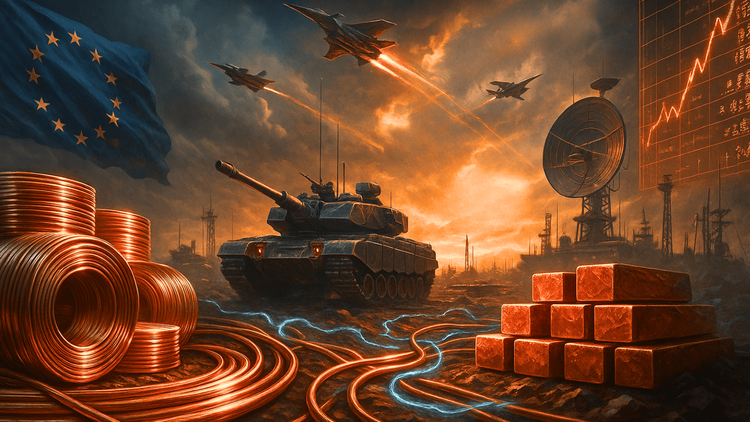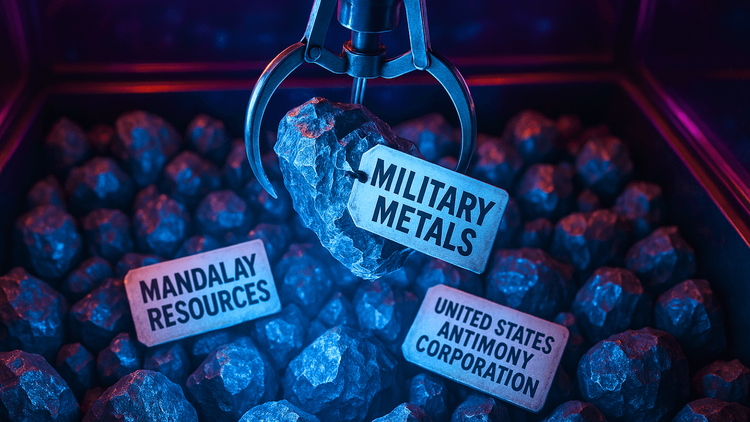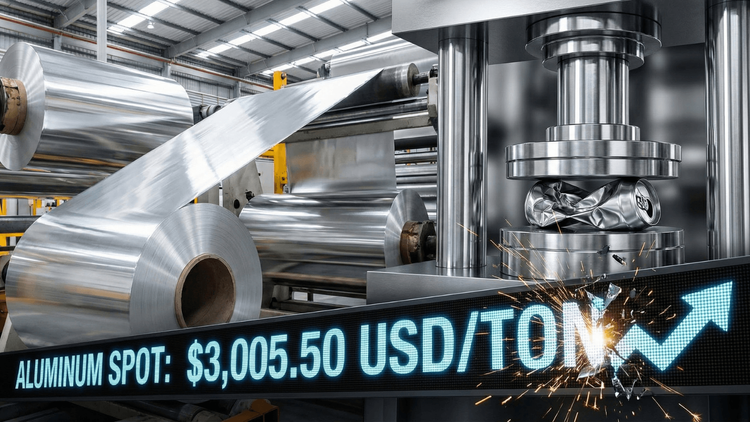Copper Joins the Battlefield as Europe Boosts Military Budgets
Copper, nickel, and steel are set to join defense stocks as winners of Europe’s rearmament push, with Goldman Sachs projecting a structural surge in industrial metals demand.

Europe’s renewed commitment to defense has transformed markets in 2025. Defense stocks are soaring, with the MSCI Europe Aerospace and Defense Index climbing an astonishing 72 percent this year alone. Yet, as investors celebrate the boom in military contractors and weapons makers, a deeper story is unfolding—one that stretches far beyond the battlefield. Industrial metals, from copper to nickel and steel, are set to become the unexpected beneficiaries of Europe’s military build-up.
The Metals Behind the Military
When governments boost defense budgets, it isn’t just aircraft, tanks, or ships that see demand. At the core of these machines lies a foundation of metals. Copper wires power communications and radar systems, nickel fortifies armored vehicles, and steel frames every piece of heavy weaponry. According to Goldman Sachs, the defense sector already accounts for roughly 3 percent of global demand for industrial metals, ranging from 2 percent of steel demand to a hefty 7 percent of nickel demand. Europe’s rearmament could push these figures sharply higher.
The EU has been under mounting pressure, both from Washington and from the shifting geopolitical realities brought on by the war in Ukraine, to ramp up military spending. In 2024, euro-area defense expenditures hovered around 1.9 percent of GDP. By 2027, Goldman expects that figure to rise to 2.7 percent. That represents an extra €167 billion, or about $196 billion, annually. Crucially, nearly 40 percent of this increase is expected to flow into procurement—the most metals-intensive category of spending—doubling NATO’s historic 20 percent benchmark.








